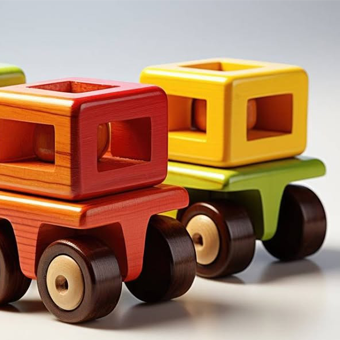Infant nap time: The timing of naps affects learning

This post is part of our series on Infant Sleep and its Impacts on Development, published in collaboration with the journal Infant Behavior and Development. The featured research appeared in a special issue on how infant sleep affects cognitive, social, and physical development and how parents and practitioners can help promote healthy sleep and development in infancy.
Key takeaways for caregivers on nap time
- Infants need to sleep a lot because sleep is necessary for learning and the first years are filled with new experiences and information.
- Napping soon after learning may help infants remember new information better than if there is a delay between learning and sleep.
- Parents can support healthy sleep and learning by recognizing signs of fatigue and providing consistent opportunities for their infants to sleep.
Why do infants nap so much?
On average, infants spend 54% to 70% of their first year asleep. Researchers think babies need to sleep a lot because they encounter so much new information every day over the first couple of years and sleep helps them process and remember the events of the day. For example, napping helps infants remember the features of a face; solve new, challenging problems; and accurately imitate behaviors they have learned, such as a sequence of actions.
Napping sooner rather than later after learning something new helped babies strengthen their memory and understanding for the new information.
Napping may support learning because information is actively processed in the brain during sleep. Alternatively, napping might support learning by protecting the new information from other experiences that could interfere before learning happens. To better understand the role of napping in infant learning, we sought to determine whether the timing of a nap matters for how well infants learn and remember new information.
Studying how the timing of a nap affects infant learning
We conducted a study with our colleagues, Melissa Horger at the University of Massachusetts, Amherst, and Anat Scher at the University of Haifa. We studied 29 babies (ages 10-½ to 18-½ months) who had recently started walking and had given up crawling within the past 10 days. Meeting with families in their homes, we worked around infants’ typical napping schedules.
In an initial session, we taught these new walkers to crawl through a play tunnel to get to their caregivers on the other side. This was a difficult task that the babies had to learn how to do. New walkers have to pay a lot of attention to keeping their balance when they are upright on two feet while simultaneously trying to move their bodies. Crawling through a tunnel required infants to switch from walking to crawling to fit their bodies inside.

Photo: John Finkelstein. Pexels.
The combination of keeping balance while coming up with a strategy for switching postures is kind of like multi-tasking for babies. All these requirements make this particular motor problem at this particular time in development a real challenge for infants.
This gave us the perfect opportunity to watch learning as it was happening because most infants can learn to solve the tunnel problem and because whole-body tasks make learning observable in a preverbal population. We placed babies at the tunnel entrance and, if they had trouble figuring out what to do, gave them a series of hints. We counted how many tries and how long it took them to enter the tunnel.
Parents should provide regular opportunities for their babies to nap and recognize signs when their children are tired, such as rubbing eyes or yawning, because timely sleep is important for learning.
After this lesson in solving the tunnel problem, we removed the tunnel and left families to go about their usual activities for the next six hours. Some of the infants took a nap at their regular time immediately after the first session with the tunnel (the Nap First group) and some took a nap at their regular time about four hours later (the Delay First group).
Thus, all babies were taught the tunnel problem and then had a six-hour period that included their nap. Finally, we presented the tunnel problem again. The key difference between the two groups was the timing of the nap during the six-hour window: The Nap First babies napped sooner and the Delay First babies napped later.
Napping soon after learning is best
The Nap First babies were better at solving the tunnel task the second time than were the Delay First babies. For example, the babies who napped right after learning needed fewer hints and entered the tunnel more quickly when they were tested. In other words, napping sooner rather than later after learning something new helped the babies strengthen their memory and understanding for the new information, and integrate the new knowledge more efficiently.

Photo: Ksenia Chernaya. Pexels.
How can parents support their infants’ healthy sleep habits?
Parents and researchers have long known about the importance of naps for infants’ learning and emotional regulation. Our study showed that the timing of naps is important, too. The findings suggest that parents should provide regular opportunities for their babies to nap and recognize signs when their children are tired, such as rubbing eyes or yawning, because timely sleep is important for learning.
Our study offers implications for early intervention work. Pediatric physical, occupational, and speech therapists typically try to teach children specific skills. In these contexts, parents may want to schedule sessions with these providers so their infants and young children can nap very soon after the appointment. Having babies nap after these kinds of learning experiences may facilitate consolidating the new information faster or more easily than if babies do not nap soon afterward.
















Leave a comment